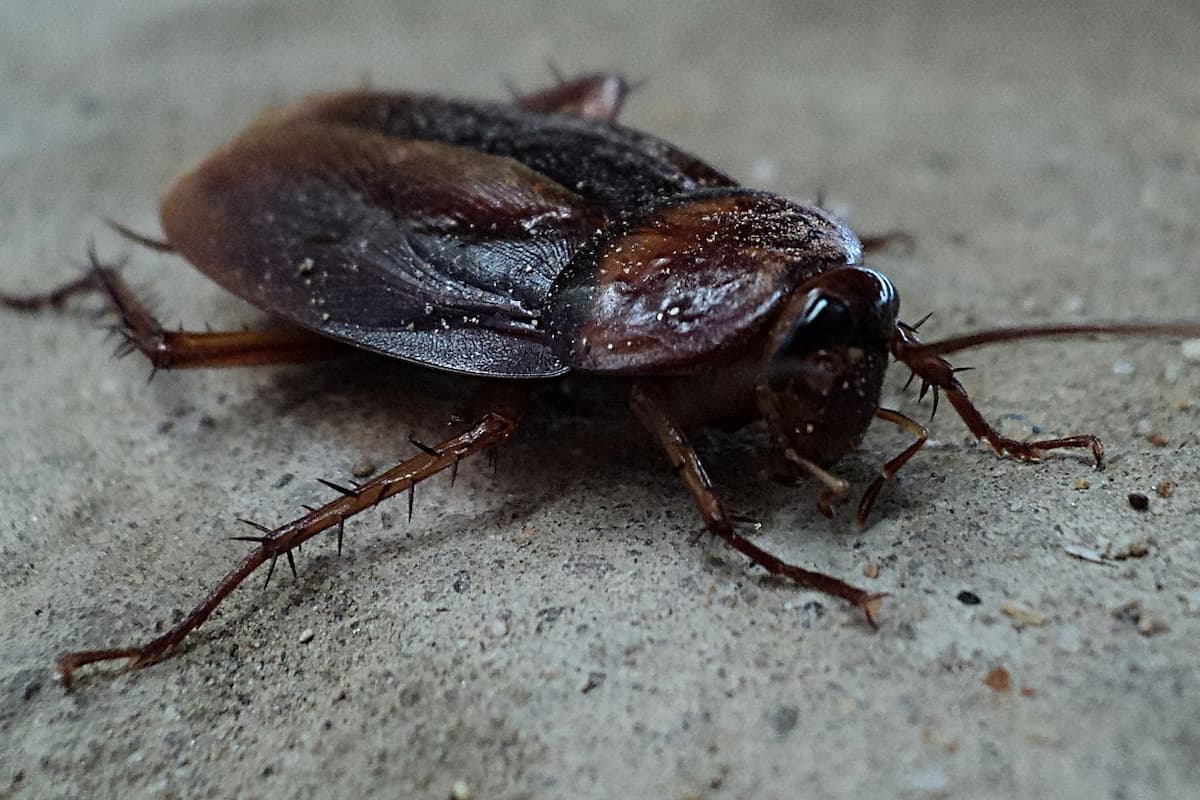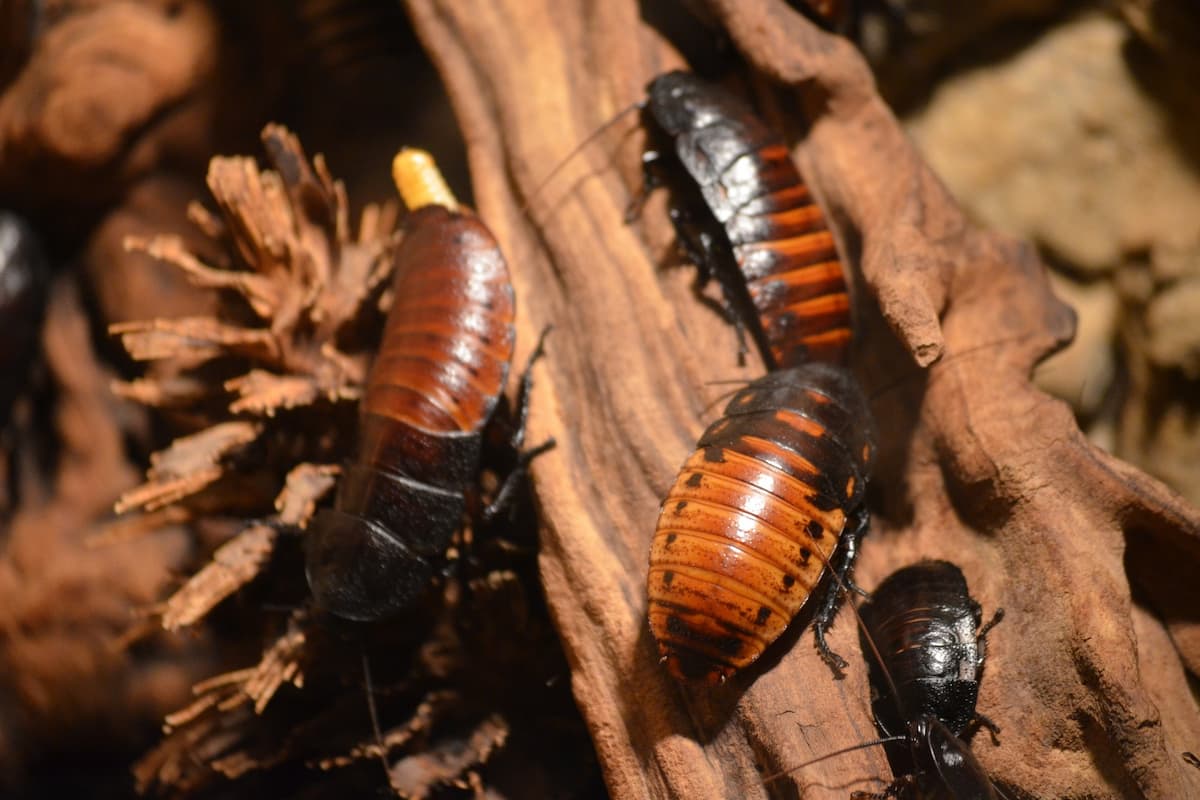Can A Cockroach Survive Being Cut In Half?
Cockroaches have extraordinary survival mechanisms, so they can handle adversity better than the average insect.
They have multiple nervous centers and respiratory openings, allowing them to survive some pretty unique circumstances.
Cutting a cockroach in half doesn’t guarantee its death. It should die, but some can survive. If the head is still intact and the insect has a good number of spiracles in their top half, it can move and breathe for a little while longer.
It’s rare for a cockroach to survive being cut in half, but it can happen, and you have to make sure it’s actually dead to avoid its continued presence in your home.
Why Are Cockroaches So Resilient?

To understand why roaches are virtually indestructible, you have to understand their anatomy and bodily functions.
To start, we need to know how cockroaches breathe.
Breathing in humans is regulated by our brains, and removing our lungs results in death.
That isn’t the case with cockroaches.
Cockroaches don’t have lungs, nor do they have gills. Like many insects, roaches have spiracles or little respiratory pores.
These holes are found all over their bodies and are not controlled by their brains.
With their respiratory organs located almost everywhere, taking out the brain or even a segment of the abdomen is unlikely to lead to immediate death – they can still breathe through their spiracles.
Even if you chop off its head, a cockroach can survive for days without food.
A primary reason they don’t die is that cockroaches are cold-blooded.
They don’t need as much heat regulation as humans, so the energy from the food they eat helps them last longer.
Add in their hard exoskeleton and nimble legs, and you have one of the toughest insects on the planet.
What Happens When You Decapitate a Cockroach?
Removing a cockroach’s head alters its lifespan but doesn’t kill it immediately.
This is because of how it breathes and circulates blood.
Humans have a complex circulatory system involving arteries, veins, and capillaries.
This system pumps oxygen-rich pressurized blood to our vital organs.
If you behead a human being, it leads to massive blood loss and reduces the pressure needed to transport oxygen to organs and tissue.
The blood loss is enough to kill you, but if it doesn’t (it will), the reduced pressure will finish the job.
The loss of a brain also spells instant death for humans.
Cockroaches, however, are on a whole other spectrum.
Blood in a cockroach doesn’t carry oxygen to other organs. It doesn’t even pump using pressure.
Cockroaches transport oxygen directly from the spiracles to the trachea, and cutting off their heads doesn’t interrupt respiratory processes.
Decapitation also doesn’t result in death through blood loss.
Because of the lack of pressure, blood doesn’t ooze out. The blood clots at the neck, and while the roach will have a scab protecting the wound, it won’t die.
However, the roach will still die within a week of dehydration.
Roaches can survive for weeks without food but can’t live without water.
If a cockroach is headless, it means it has no mouth to drink water with and will die eventually.
How To Deal With Cockroaches

Dealing with cockroaches is a multifaceted process, and pesticides alone aren’t enough to stop these invasive insects.
The methods below are some of the most effective, but while they work, they also have downsides.
1. Boric Acid
Boric acid is a mixture of water and boron naturally occurring in plants, and while it’s not deadly for humans, it’s poisonous to roaches.
When consumed, boric acid tampers with a cockroach’s nervous and digestive system. It’s fatal, but it takes around 72 hours to kill roaches effectively.
That shouldn’t be a significant issue as, when used correctly, boric acid can eradicate all the roaches in your house.
You can’t just leave boric acid lying around, though. You must mix it into food (white sugar or peanut butter are best) and set bait traps.
Once you’ve made your mixture, place the bait near their hideout and wait for results.
Cockroaches are social and usually take food to their buddies, so you can rest assured knowing the poison will kill more than one roach.
The downside of this method is that it requires regular cleanup.
Given how long it takes for the acid to be effective, the roaches won’t die in one place, and you have to track them all down.
Also, while it’s not harmful to humans, kids are more sensitive to pesticides than adults.
While it’s not dangerous, you should not keep boric acid around pets as it can cause complications if the animal digests it.
All that aside, boric acid is an efficient, cost-effective DIY extermination method.
2. Glue Traps
Glue traps are a safe, effective way of eradicating roaches. They’re safer for kids, but I do recommend hiding the strips.
The smell of the trap is enough to attract the roach, so you don’t need to make your own bait.
The insects also remain trapped when they die, so you don’t need to scour the house for dead roaches.
It’s also best to change out the glue traps when the dead insects pile up.
3. Call an Exterminator
Contacting a professional is the most effective way to deal with roach infestations.
Exterminators are more experienced, and you have the assurance that the problem will not occur again soon.
The only caveat is that they may be expensive.
Conclusion
Cockroaches are surprising creatures.
Their survival mechanisms can get them through various situations, highlighting the importance of vigilance when dealing with an infestation.
Unless the issue is minor, I don’t recommend taking care of it on your own, especially if you can afford an exterminator.
Professionals can reach places you can’t, and your house will be roach-free for longer.
Don’t worry if you can’t afford one, though. DIY methods like boric acid also get the job done.
They take more time, but you’ll see positive results soon enough.
